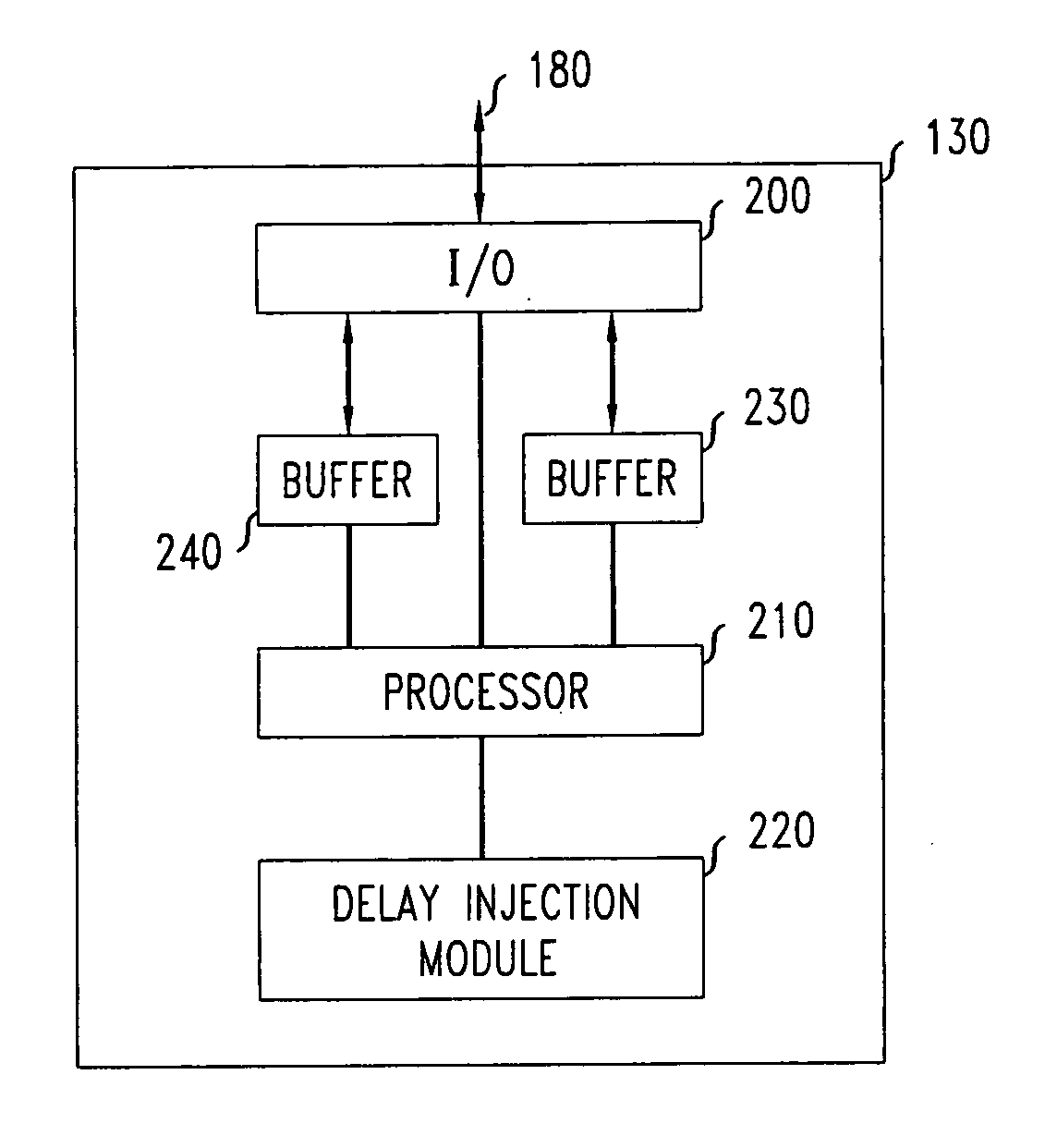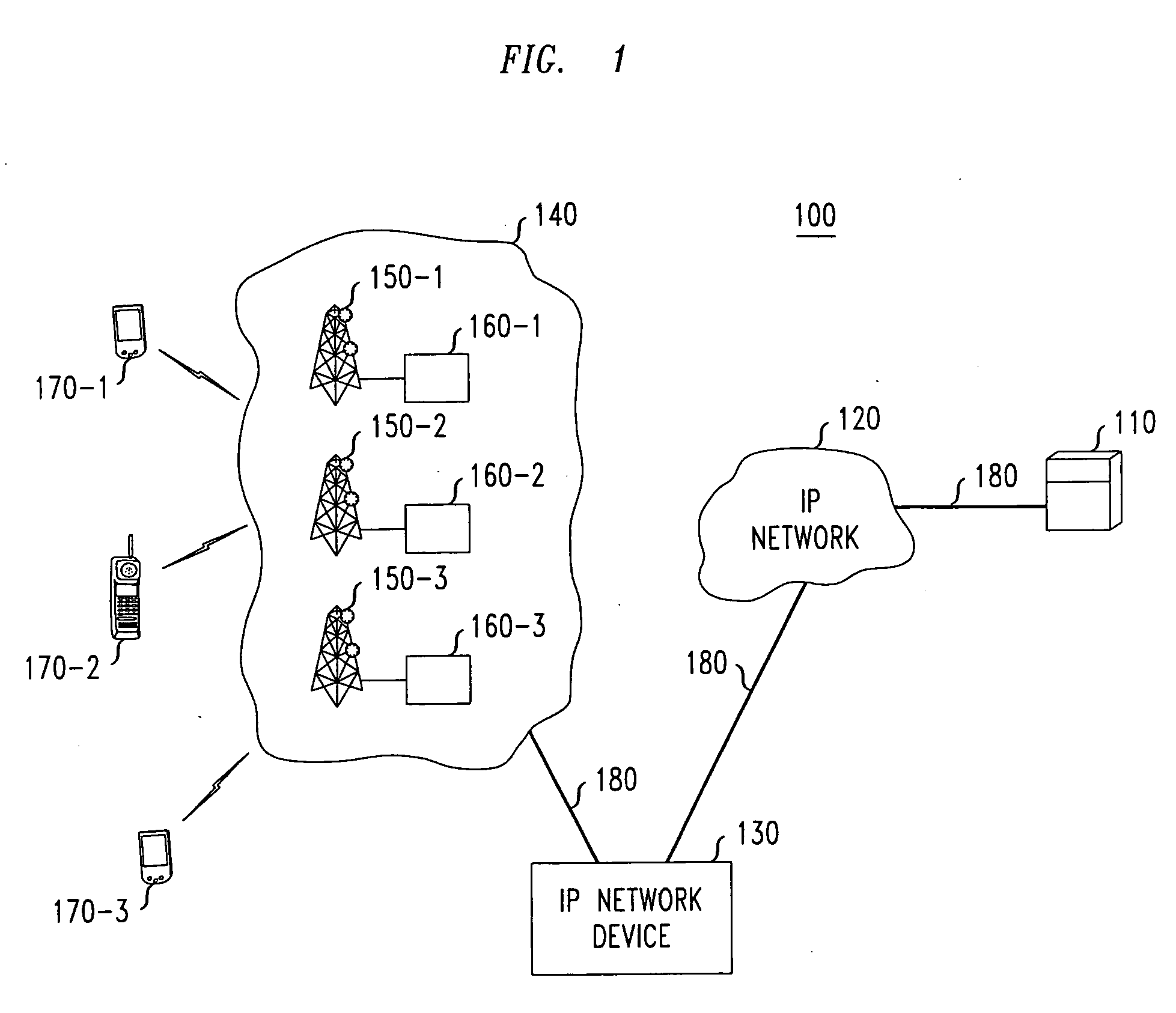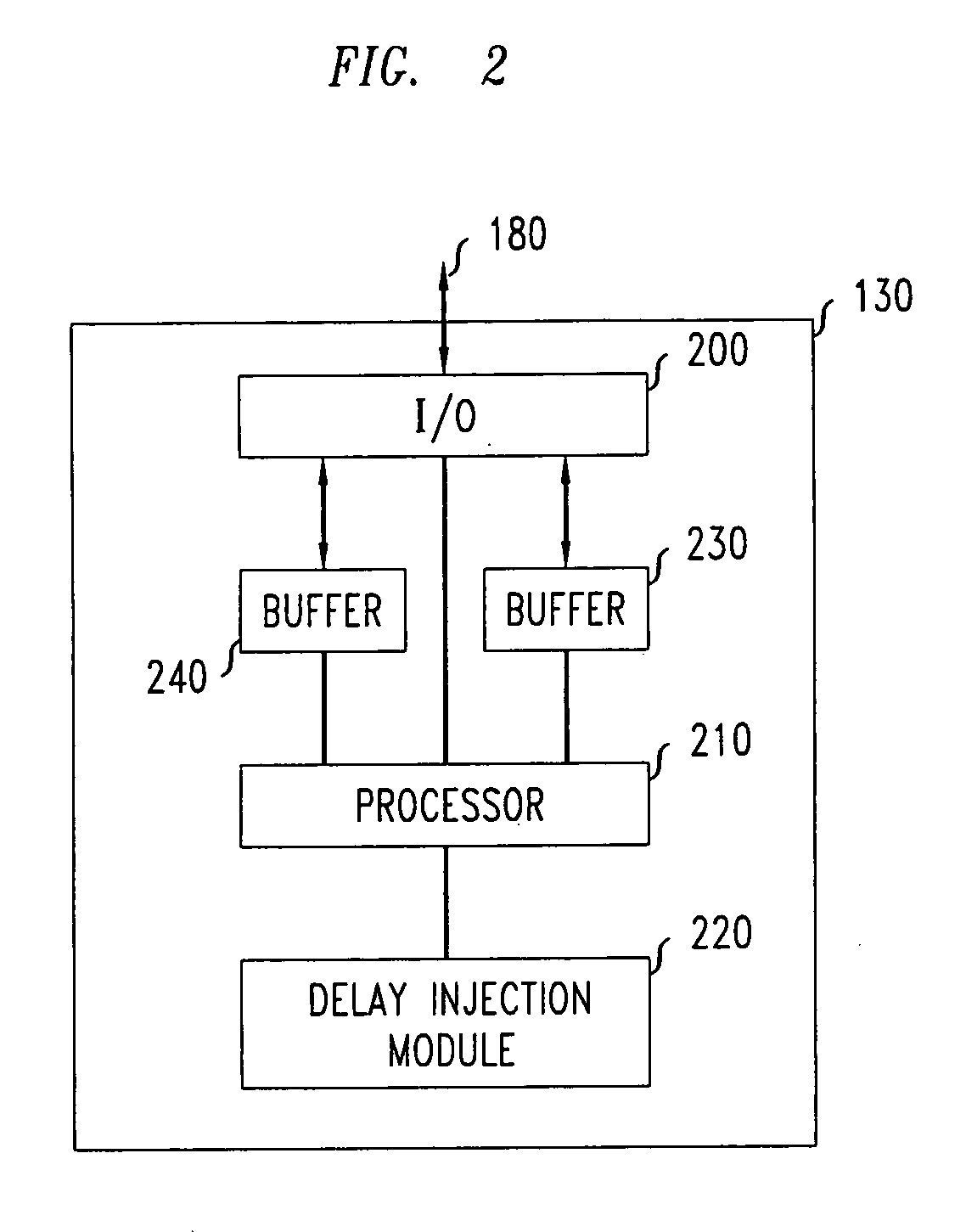Method and apparatus for timeout reduction and improved wireless network performance by delay injection
a delay injection and wireless network technology, applied in the field of wireless communication networks, can solve the problems of insufficient delay injection for individual flows, each flow is subject to potential performance-degrading spurious timeouts,
- Summary
- Abstract
- Description
- Claims
- Application Information
AI Technical Summary
Benefits of technology
Problems solved by technology
Method used
Image
Examples
Embodiment Construction
[0026] While TCP will be well understood by those of ordinary skill in the art, a brief discussion of certain TCP features will be introduced to allow for a better understanding of the various aspects, embodiments and advantages of the present invention. In particular, in order to detect packet or acknowledgement losses, TCP implements a timer which can be viewed as an upper bound on the round-trip time between the sender and the receiver. If an acknowledgement is not received before the timer expires, the corresponding packet is deemed to be lost, the congestion control mechanism is triggered and the packet is retransmitted. As such, the calculation of the timeout threshold is of critical importance (see, e.g., V. Jacobsen, “Congestion Avoidance and Control”, in Proceedings of ACM SIGCOMM, 1988, which is hereby incorporated by reference herein). If we denote by RTT[k] the k-th measurement value of the round-trip time, it will be understood that (in most implementations) only one pa...
PUM
 Login to View More
Login to View More Abstract
Description
Claims
Application Information
 Login to View More
Login to View More - R&D
- Intellectual Property
- Life Sciences
- Materials
- Tech Scout
- Unparalleled Data Quality
- Higher Quality Content
- 60% Fewer Hallucinations
Browse by: Latest US Patents, China's latest patents, Technical Efficacy Thesaurus, Application Domain, Technology Topic, Popular Technical Reports.
© 2025 PatSnap. All rights reserved.Legal|Privacy policy|Modern Slavery Act Transparency Statement|Sitemap|About US| Contact US: help@patsnap.com



